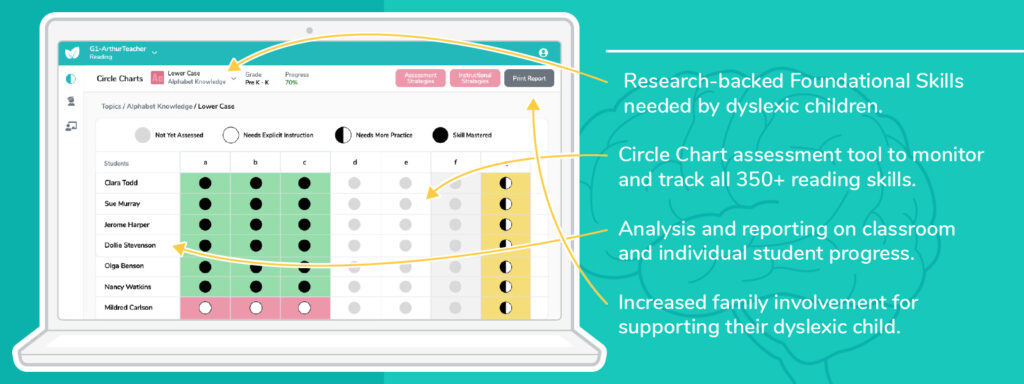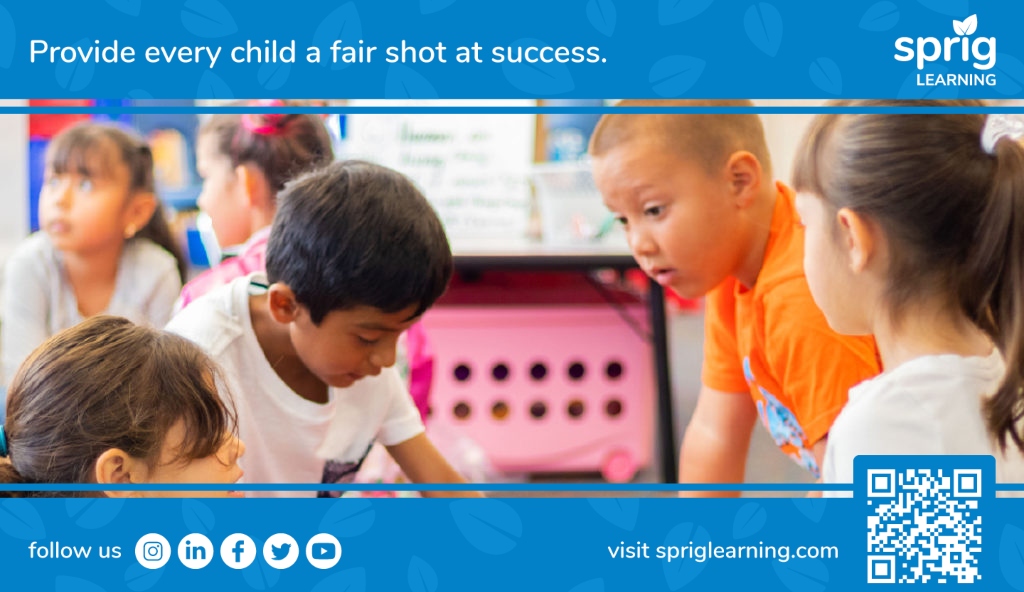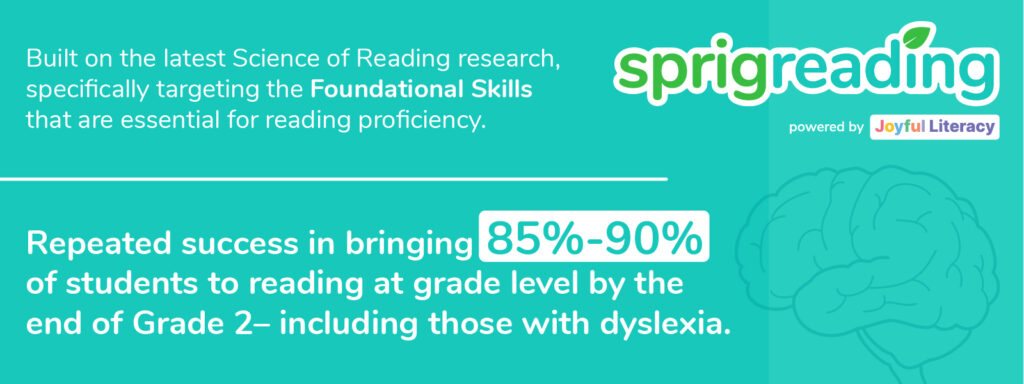October was dyslexia awareness month. The International Dyslexia Association (IDA) is having its annual conference today, called DyslexiaCon. Usually in the month of October or November, IDA plans its biggest event of the year, bringing together professionals, families, and those affected by dyslexia.
The early literacy community is involved in raising awareness about dyslexia that affects the reading ability of so many children around the world.
In Canada alone, there are said to be over 750,000 dyslexic students.
Sprig has previously written on how to build reading proficiency in dyslexic children. The article goes over the symptoms of dyslexia at various stages of early learning. It covers the characteristics of effective intervention, and features advice from reading programs that focus on dyslexia. Additionally, it explains the current state of dyslexia training for teachers.
It is a must read for anyone interested in implementing reading best practices in the classroom.
Regardless of the type and degree of training teachers have received on dyslexia, or their current level of knowledge, it’s never too late to create a more supportive learning experience for dyslexic students.
If you want to understand the basics of dyslexia and see proven characteristics of effective reading programs, do read Sprig’s Improving Reading with Dyslexia.
This article is a follow up to that content, focusing exclusively on how teachers can support students with dyslexia.
Helping Dyslexic Students- 4 Directives

To maximize the reading potential for every child, including those with dyslexia, there are 4 things that need to happen.
- A love for reading must be instilled early on.
- The right learning environment must be provided.
- First round of assessments should be done early.
- Instruction should be direct and systematic at all levels of interventions.
The above four directives are further explored in the rest of the article.
1. Make Reading Enjoyable
Dr. Cruger is a neuropsychologist at the Child Mind Institute. He says that typical tutoring may actually be harmful to a dyslexic early reader, especially if the experience is unpleasant.
He goes on to say that if a young student does not like the experience of reading help, the tutoring service will not be effective.
A dyslexic child has to enjoy the experience of reading. Simply upping the dosage of practice will not help without offering positive reinforcements and encouragement along the way.
Dr. Cruger recommends that teachers celebrate every small victory and accomplishment in the learning journey of dyslexic students.
2. Offer Necessary Accommodations
Given dyslexic students need more support than the rest of the class, proper accommodations should be arranged for them so they don’t lose interest in the process of reading.
Understood is a non-profit organization that offers resources for better understanding and dealing with learning differences such as dyslexia and ADHD.
Understood’s former Director of Thought Leadership, Amanda Morin, offers tips on how to tweak classroom materials and routine to suit the needs of dyslexic children.
Educators are asked to use coloured strips or bookmarks to make it easier for striving readers to concentrate on a line of text. They are encouraged to give detailed instructions and read aloud written instructions.
The idea is to never leave a student in a state of confusion where they are too embarrassed to seek help.
3. Address the Root Issue With the Early Assessment
The challenge in grasping foundational skills such as decoding is said to be the root problem of dyslexia.
If this root issue is identified early enough, it is possible to mitigate the effects of dyslexia. It is why many states across the US have mandated dyslexia screening in early learning. Sprig considers the availability of such screenings important enough that it is featured as a question for state profiles in its interactive evidence-based early learning map.
In a recent study by Maureen Lovett, Professor of Pediatrics and Medical Services at University of Toronto, learning outcomes for dyslexic kids were almost twice as good when interventions were delivered from Grade 1 to Grade 3.
Early intervention is important for all children. But as dyslexic children require added support, their case for early intervention is even more acute.
4. Direct and Systematic Instruction at All Levels
As learning to read is an acquired ability, the brain needs a chance to learn about the relationships between sounds and letters. Most intervention methodologies follow a three tier system.
Tier 1 refers to universal high-quality instruction for the whole classroom. Tier 2 refers to targeted intervention for small groups who need extra support. Tier 3 refers to intensive instruction for individual students.
This framework applies very well to supporting dyslexic students, when it comes to matching the right instruction at each level.
At tier 1, they are exposed to the acquisition of grade-level, fundamental skills that every student needs to learn reading, regardless of whether they have dyslexia or not.
At tier 2 and tier 3, the progress of any dyslexic students is accelerated so they are able to efficiently bridge any learning gaps in order to participate in grade-level reading.
So at all levels from the ground up, they are always scaffolded with extra support, beginning with inclusive whole classroom instruction with the possibility of in-classroom differentiated instruction.
Such a direct and systematic approach to instruction ensures that any learning shortcomings are addressed in the beginning so every student can have their weaknesses addressed.
In future years, greater support is provided so the dyslexic learner has the chance to work on their identified weaknesses while still being on route to reading at grade level, with age-appropriate reading materials.
How Sprig Helps Dyslexic Readers
Unlike other children, dyslexic early learners often need more explicit instruction, intensive practice and targeted support.
Sprig Reading: Powered by Joyful Literacy, provides ALL the assistance teachers, tutors and reading specialists need to make this possible.
Educators provide rigorous instruction and support to children with dyslexia by using an evidence-based and intuitive reading platform.

The planned scope and sequencing of lessons in Sprig Reading, together with its clear assessment and instructional strategies on foundational reading skill sets, provide a systematic literacy approach to helping all students with dyslexia.
At the end of the day, dyslexia is very complex and new research on the reading brain continues to be published every quarter.
But there is converging evidence on the type, frequency and timing of help dyslexic children need to receive. By adopting evidence-based reading strategies, it’s possible to boost the reading levels of dyslexic learners.


